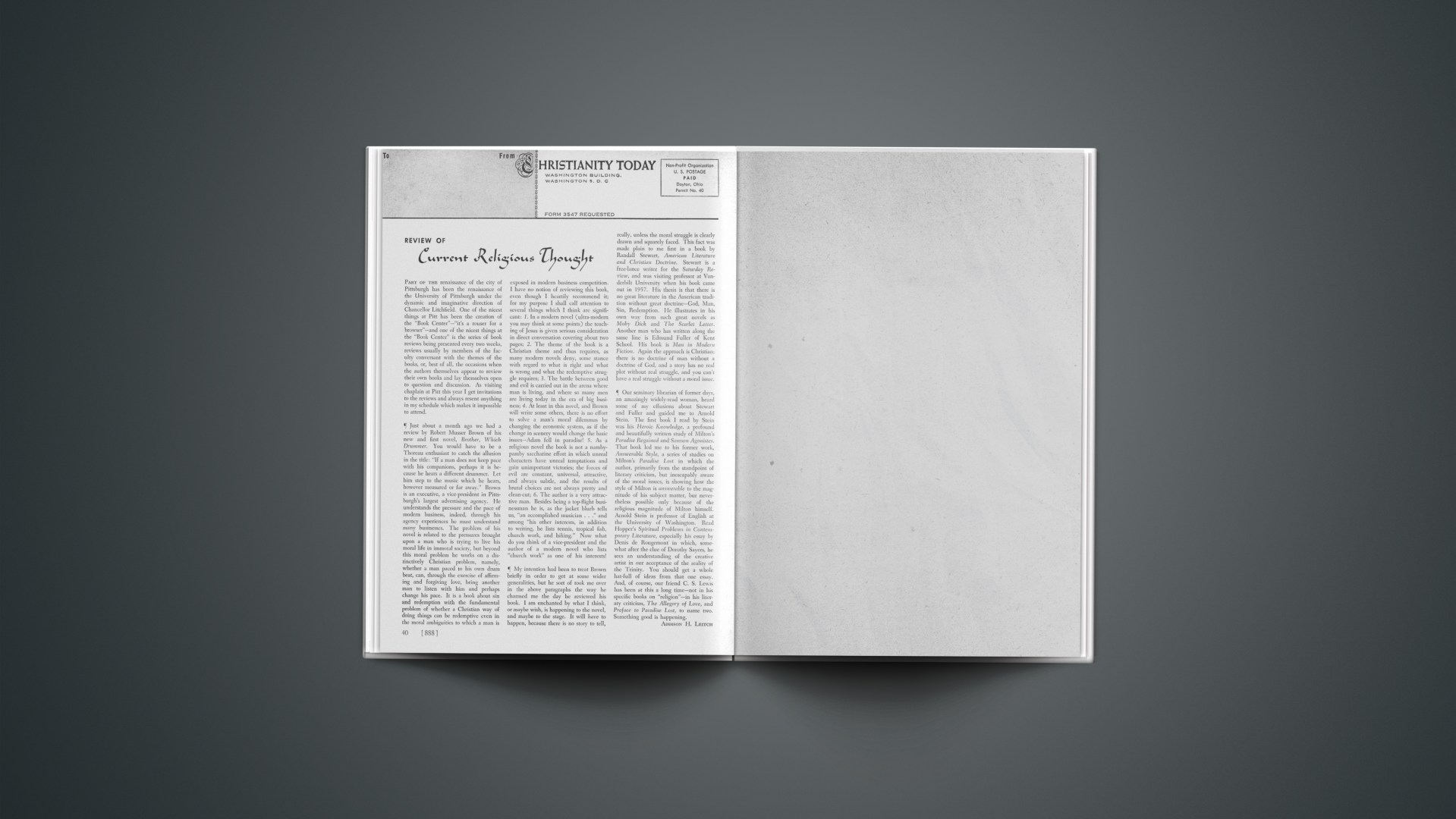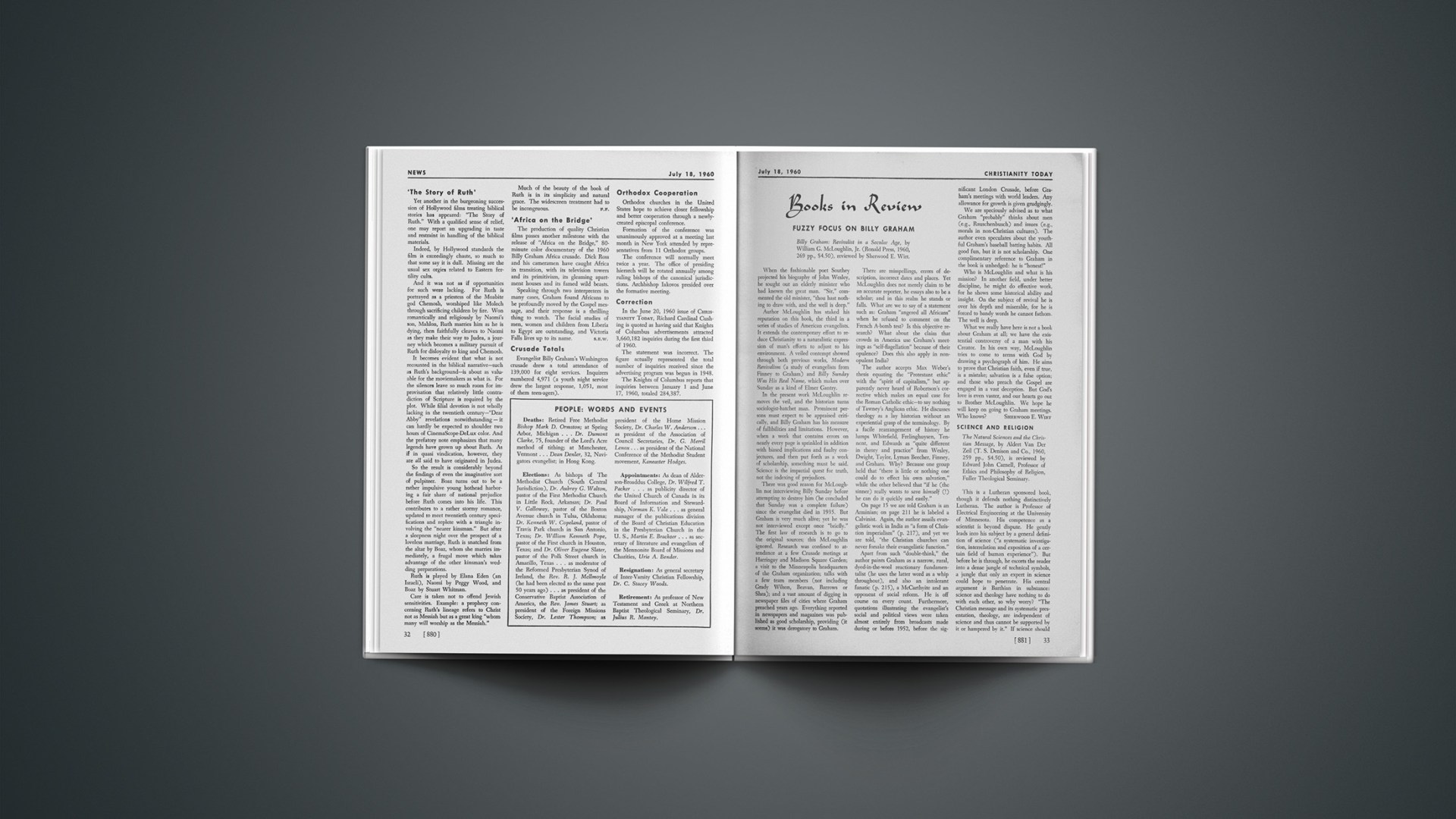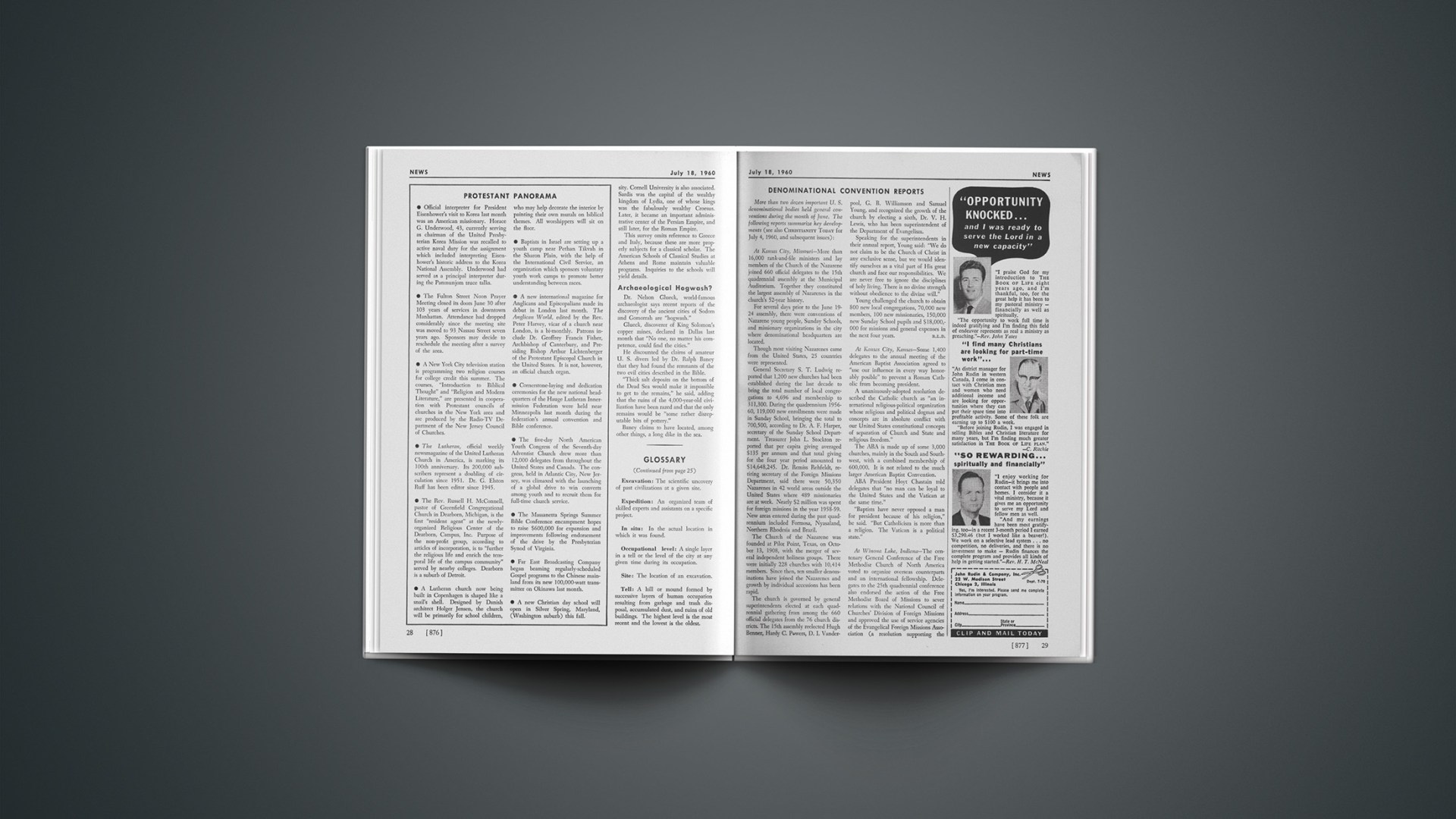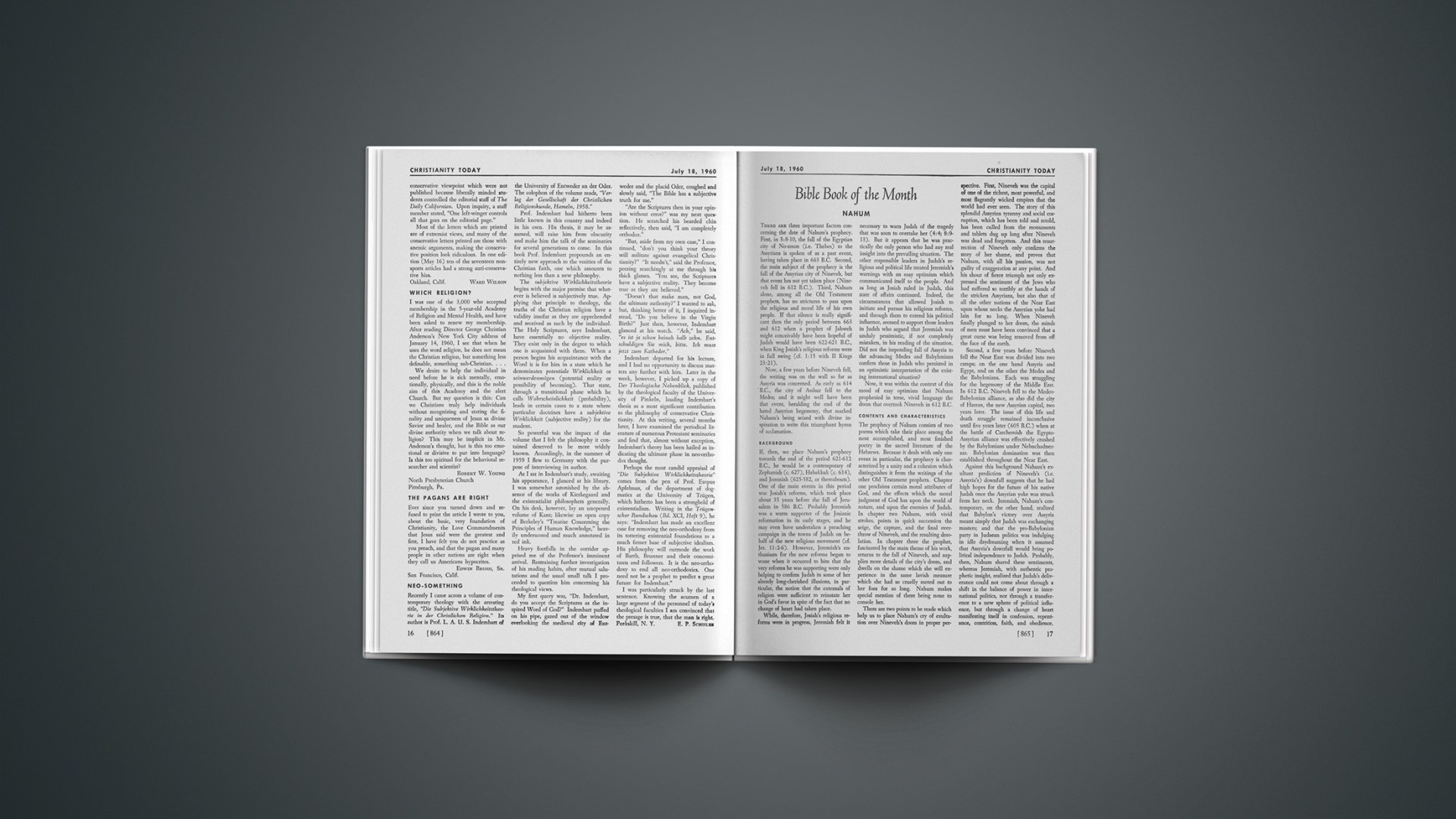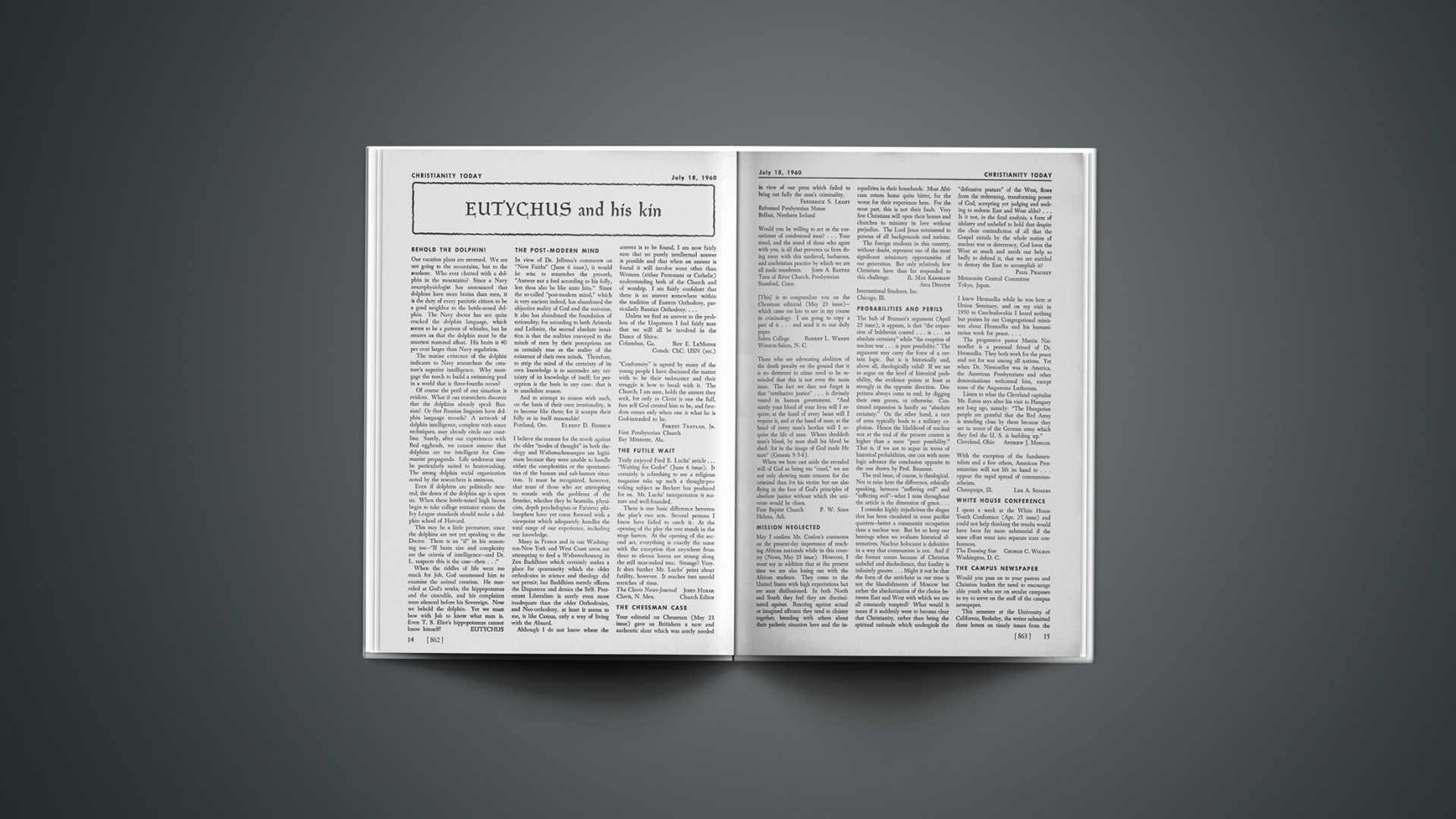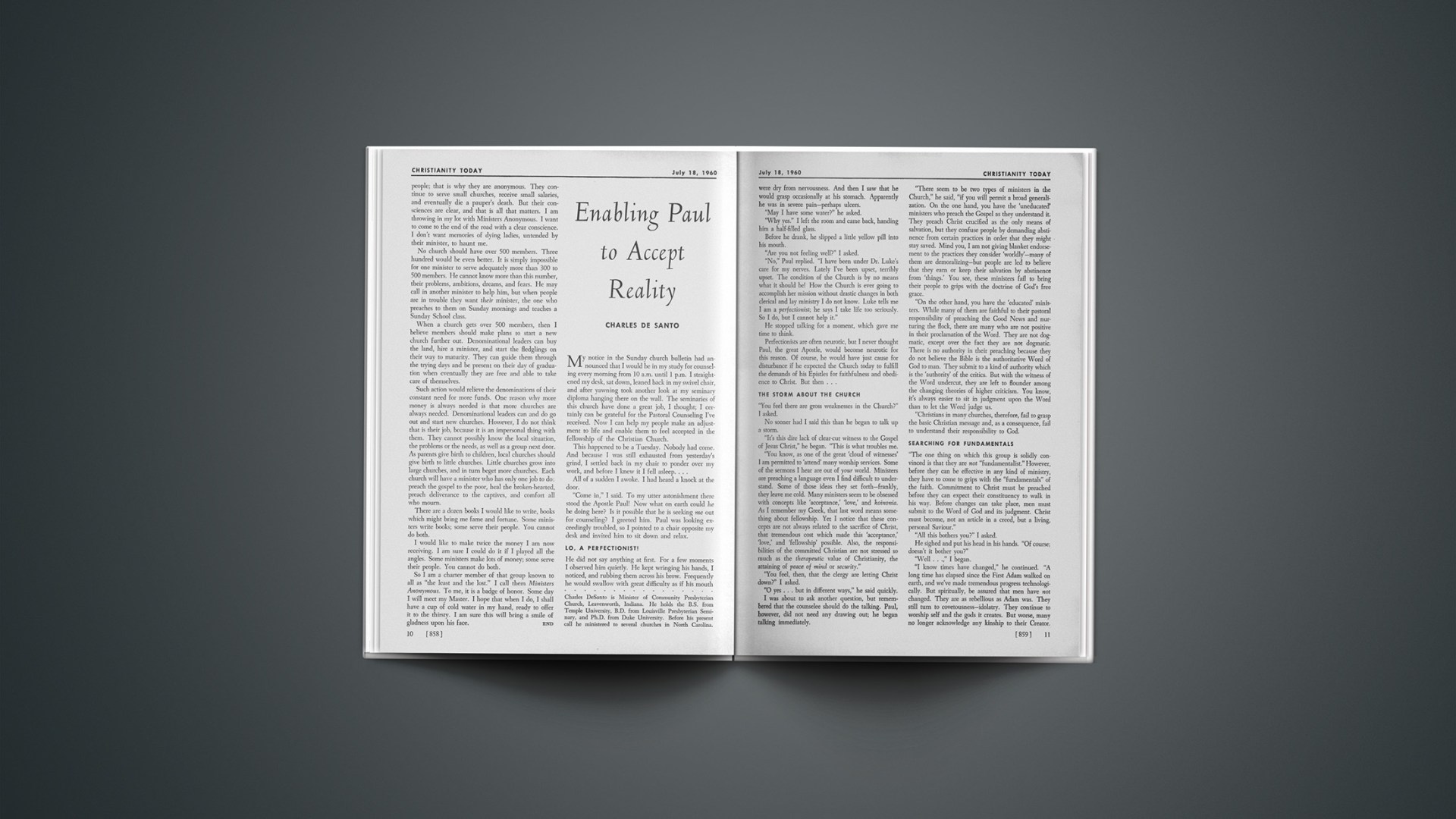Part of the renaissance of the city of Pittsburgh has been the renaissance of the University of Pittsburgh under the dynamic and imaginative direction of Chancellor Litchfield. One of the nicest things at Pitt has been the creation of the “Book Center”—“it’s a rouser for a browser”—and one of the nicest things at the “Book Center” is the series of book reviews being presented every two weeks, reviews usually by members of the faculty conversant with the themes of the books, or, best of all, the occasions when the authors themselves appear to review their own books and lay themselves open to question and discussion. As visiting chaplain at Pitt this year I get invitations to the reviews and always resent anything in my schedule which makes it impossible to attend.
Just about a month ago we had a review by Robert Musser Brown of his new and first novel, Brother, Which Drummer. You would have to be a Thoreau enthusiast to catch the allusion in the title: “If a man does not keep pace with his companions, perhaps it is because he hears a different drummer. Let him step to the music which he hears, however measured or far away.” Brown is an executive, a vice-president in Pittsburgh’s largest advertising agency. He understands the pressure and the pace of modern business, indeed, through his agency experiences he must understand many businesses. The problem of his novel is related to the pressures brought upon a man who is trying to live his moral life in immoral society, but beyond this moral problem he works on a distinctively Christian problem, namely, whether a man paced to his own drum beat, can, through the exercise of affirming and forgiving love, bring another man to listen with him and perhaps change his pace. It is a book about sin and redemption with the fundamental problem of whether a Christian way of doing things can be redemptive even in the moral ambiguities to which a man is exposed in modern business competition. I have no notion of reviewing this book, even though I heartily recommend it; for my purpose I shall call attention to several things which I think arc significant: I. In a modern novel (ultra-modern you may think at some points) the teaching of Jesus is given serious consideration in direct conversation covering about two pages; 2. The theme of the book is a Christian theme and thus requires, as many modern novels deny, some stance with regard to what is right and what is wrong and what the redemptive struggle requires; 3. The battle between good and evil is carried out in the arena where man is living, and where so many men are living today in the era of big business; 4. At least in this novel, and Brown will write some others, there is no effort to solve a man’s moral dilemmas by changing the economic system, as if the change in scenery would change the basic issues—Adam fell in paradise! 5. As a religious novel the book is not a namby-pamby saccharine effort in which unreal characters have unreal temptations and gain unimportant victories; the forces of evil are constant, universal, attractive, and always subtle, and the results of brutal choices are not always pretty and clean-cut; 6. The author is a very attractive man. Besides being a top-flight businessman he is, as the jacket blurb tells us, “an accomplished musician …” and among “his other interests, in addition to writing, he lists tennis, tropical fish, church work, and hiking.” Now what do you think of a vice-president and the author of a modern novel who lists “church work” as one of his interests!
My intention had been to treat Brown briefly in order to get at some wider generalities, but he sort of took me over in the above paragraphs the way he charmed me the day he reviewed his book. I am enchanted by what I think, or maybe wish, is happening to the novel, and maybe to the stage. It will have to happen, because there is no story to tell, really, unless the moral struggle is clearly drawn and squarely faced. This fact was made plain to me first in a book by Randall Stewart, American Literature and Christian Doctrine. Stewart is a free-lance writer for the Saturday Review, and was visiting professor at Vanderbilt University when his book came out in 1957. His thesis is that there is no great literature in the American tradition without great doctrine—God, Man, Sin, Redemption. He illustrates in his own way from such great novels as Moby Dick and The Scarlet Letter. Another man who has written along the same line is Edmund Fuller of Kent School. His book is Man in Modern Fiction. Again the approach is Christian; there is no doctrine of man without a doctrine of God, and a story has no real plot without real straggle, and you can’t have a real strangle without a moral issue.
Our seminary librarian of former days, an amazingly widely-read woman, heard some of my effusions about Stewart and Fuller and guided me to Arnold Stein. The first book I read by Stein was his Heroic Knowledge, a profound and beautifully written study of Milton’s Paradise Regained and Samson Agonistes. That book led me to his former work, Answerable Style, a series of studies on Milton’s Paradise Lost in which the author, primarily from the standpoint of literary criticism, but inescapably aware of the moral issues, is showing how the style of Milton is answerable to the magnitude of his subject matter, but nevertheless possible only because of the religious magnitude of Milton himself. Arnold Stein is professor of English at the University of Washington. Read I lopper’s Spiritual Problems in Contemporary Literature, especially his essay by Denis de Rougemont in which, somewhat after the clue of Dorothy Sayers, he sees an understanding of the creative artist in our acceptance of the reality of the Trinity. You should get a whole hat-full of ideas from that one essay. And, of course, our friend C. S. Lewis has been at this a long time—not in his specific books on “religion”—in his literary criticism, The Allegory of Love, and Preface to Paradise Lost, to name two. Something good is happening.

